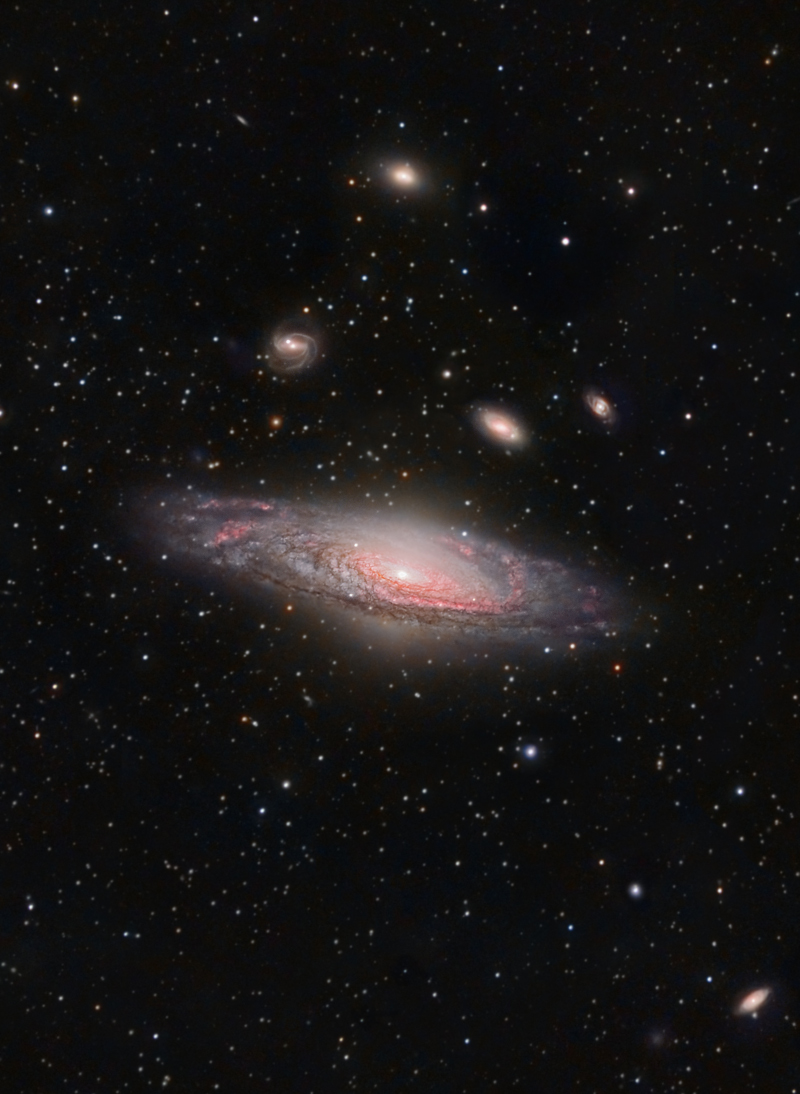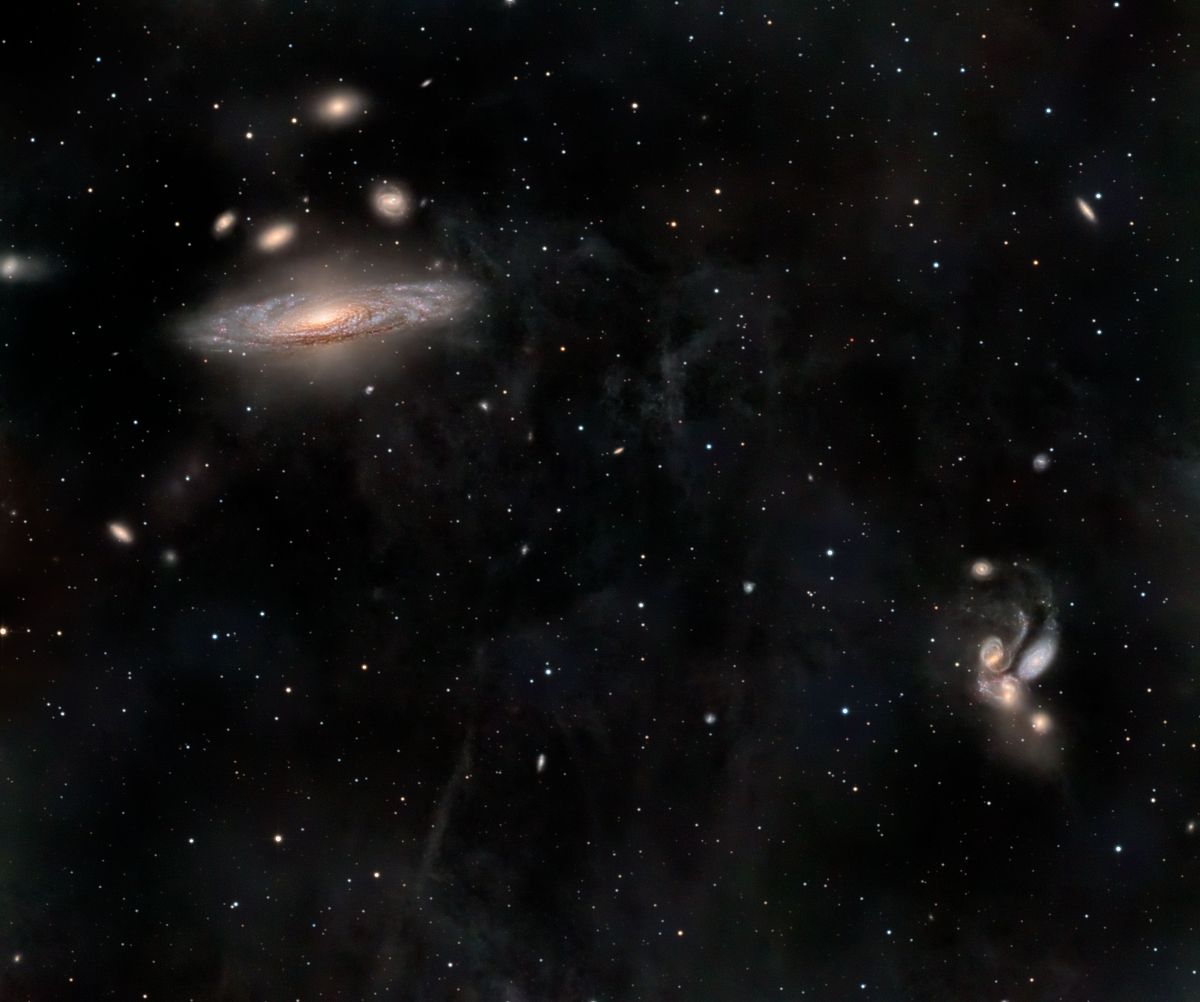It's a nice image. I like it.
The APOD is "red-forward". You'd think that as a lover of blue things, I'd hate a picture that "leans toward the red", but in this case the red color just shows us where there is red hydrogen alpha emission and thus star formation. There is definitely a value in knowing that.
People process their images in different ways, and bring out colors in various ways. I'd say that there
are some rights and wrongs here, but there is a wide variety of acceptable choices. The choices made for today's APOD are definitely all acceptable.
But there are other ways of showing us NGC 7331 and the Deer Lick Group, too:
Adam Block is one of my all-time favorite astrophotographers, and I love all the subtle colors in his picture. You can see that he brings out a lot more blue in his picture than Ian Gorenstein does. Then again, Starship Asterisk*'s resident astronomer, Chris Peterson, would tell you that galaxies are all gray. Well, to each his or her own.
It is really very interesting that NGC 7331 is seen right in front of the galaxy group known as the
Deer Lick Group, which is at least 8 times farther away from us than NGC 7331 (some 300-350 million light-years away versus some 40 million light-years away for NGC 7331). I find it interesting that the galaxies of the Deer Lick Group appear to have been "fraying away" on each other and stealing and dispersing one another's gas supplies until they have become a group of "mostly elliptical galaxies". Well, not quite elliptical, because NGC 7337 is definitely a barred spiral galaxy, although one with hardly any star formation:
Barred "Deer Lick" spiral galaxy NGC 7337. Credit: SDSS.
As interesting as the Deer Lick Group galaxies are, there is another, even more interesting galaxy group in the "vicinity" of NGC 7331 (although again much further away), namely
Stephan's Quintet. I just found a pretty lovely picture showing NGC 7331, the Deer Lick Group and Stephan's Quintet together:
Linda, I love that picture of yours! I hope I was allowed to copy it. You have chosen to emphasize the gas streams in and around the galaxies (including the IFN, the Integrated Flux Nebula, which is high cirrus clouds in the Milky Way), which gives your image a wonderful sense of fluidity and motion.
I think your image is mirror-reversed, so that Stephan's Quintet should be at the lower left of NGC 7331 instead of at the lower right of it (at least if north is up and east to the left, which is the conventional way of showing deep-sky astronomical objects). But that is a very minor quibble.
Ann
 NGC 7331 and Beyond
NGC 7331 and Beyond




